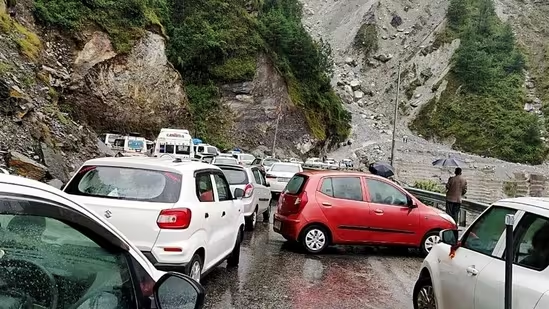Traveling to the picturesque regions of Uttarakhand and Himachal Pradesh during the monsoon season can be alluring, but it’s important to understand the risks involved. The monsoon period, typically from mid-June to mid-September, presents several challenges that can make travel in these Himalayan states risky and inconvenient. Here’s why it’s advisable to avoid travel during this time.
Increased Risks Due to Infrastructure Changes
Over the past decade, extensive four-lane highway constructions in both Uttarakhand and Himachal Pradesh have significantly altered the natural landscape. While these developments are intended to improve connectivity, they have inadvertently increased the risk of landslides and road collapses. The new roads often cut through unstable terrains, making them more susceptible to erosion and landslides, especially during heavy rains.
Impact of Climate Change
Climate change has exacerbated weather patterns, leading to more frequent and intense cloudbursts in the Himalayan region. These sudden and extreme rainfall events can trigger landslides and flash floods, disrupting travel plans and endangering lives. The increase in global temperatures has intensified these weather phenomena, creating more unpredictable and severe conditions.
Environmental and Human Factors
Several human activities contribute to the growing risks during the monsoon season:
- Over-Construction: The rapid and extensive construction of infrastructure has altered natural water drainage systems, making the land more prone to flooding and erosion.
- Increased Tourist Traffic: The surge in tourists adds pressure on local resources and infrastructure, further straining already vulnerable areas.
- Large Dams and Reservoirs: The construction of massive dams and reservoirs, coupled with water accumulation, affects the natural flow of rivers and can contribute to sudden flooding.
Travel Precautions
If you must travel during the monsoon season, it’s crucial to stay informed about the road and weather conditions. Regularly check weather forecasts and road reports before setting out. Be prepared for sudden changes in weather and have contingency plans in place. However, even with careful planning, traveling during the monsoon season can still be challenging and potentially hazardous.
In summary, while the monsoon season can transform Uttarakhand and Himachal Pradesh into a lush, green paradise, the associated risks and challenges often outweigh the benefits. For a safer and more enjoyable experience, consider planning your visit outside the monsoon period, when the weather is more stable and the travel conditions are more favorable.
Some of the common issues caused by landslides and cloudbursts in Uttarakhand include:
1. Traffic jams: Landslides and cloudbursts can block roads, leading to traffic congestion and making it difficult for tourists to reach their destinations.
2. Disruption of transportation services: Landslides and cloudbursts can damage roads, bridges, and other transportation infrastructure, disrupting bus and taxi services.
3. Accidents and injuries: Landslides and cloudbursts can cause accidents and injuries to tourists and locals alike.
4. Property damage: Landslides and cloudbursts can damage hotels, resorts, and other tourist infrastructure.
5. Environmental damage: Landslides and cloudbursts can cause environmental damage, including deforestation, soil erosion, and pollution.
6. Health risks: Landslides and cloudbursts can contaminate water sources, leading to health risks for tourists and locals.
7. Economic impact: Landslides and cloudbursts can have a significant economic impact on the tourism industry, leading to losses for hotel owners, tour operators, and other stakeholders.
If you are planning to visit Uttarakhand, it is essential to check the weather forecast and road conditions before embarking on your journey. You can also register with the local authorities or tour operators to receive updates on any natural disasters or disruptions in the area.




